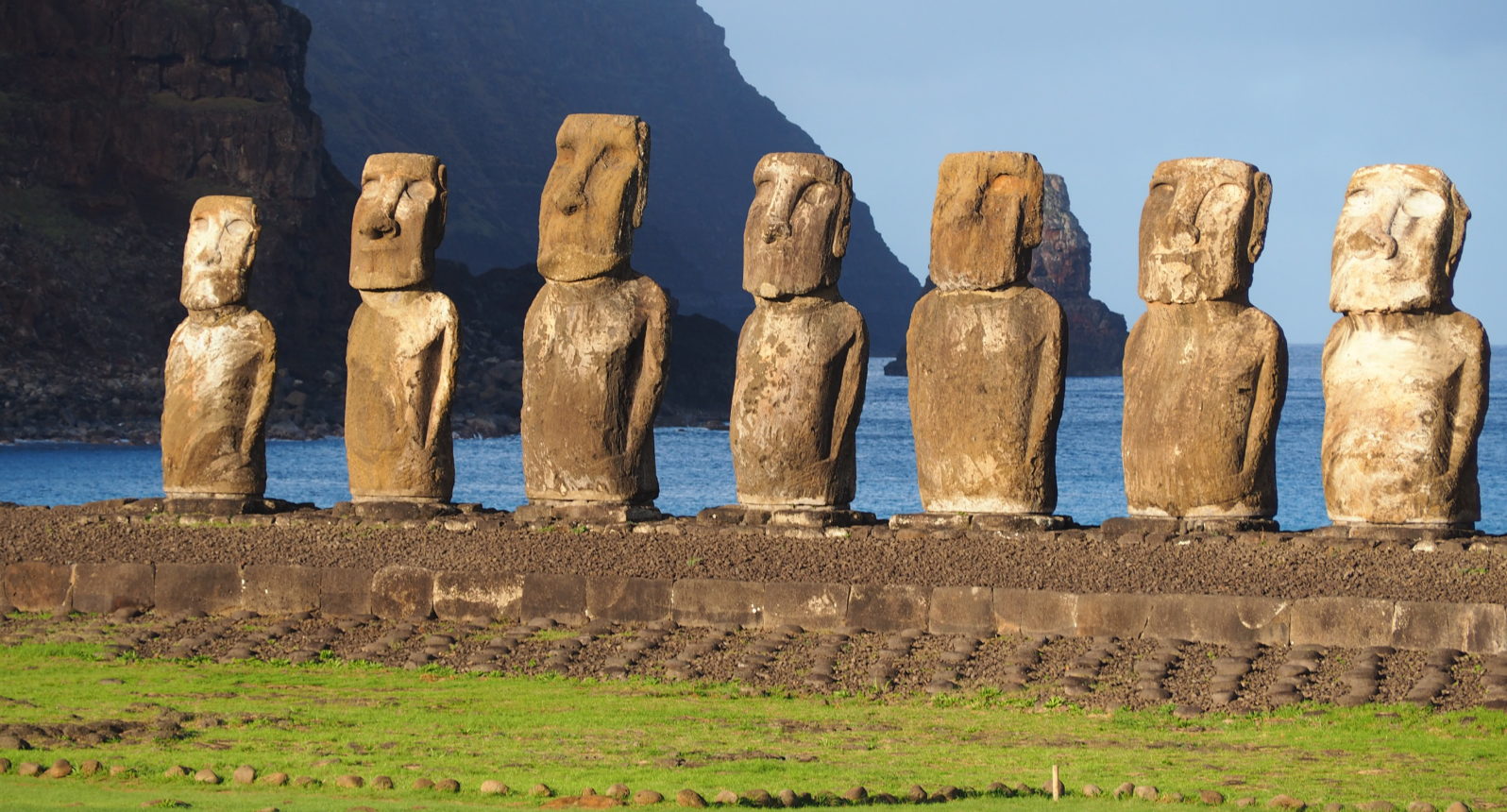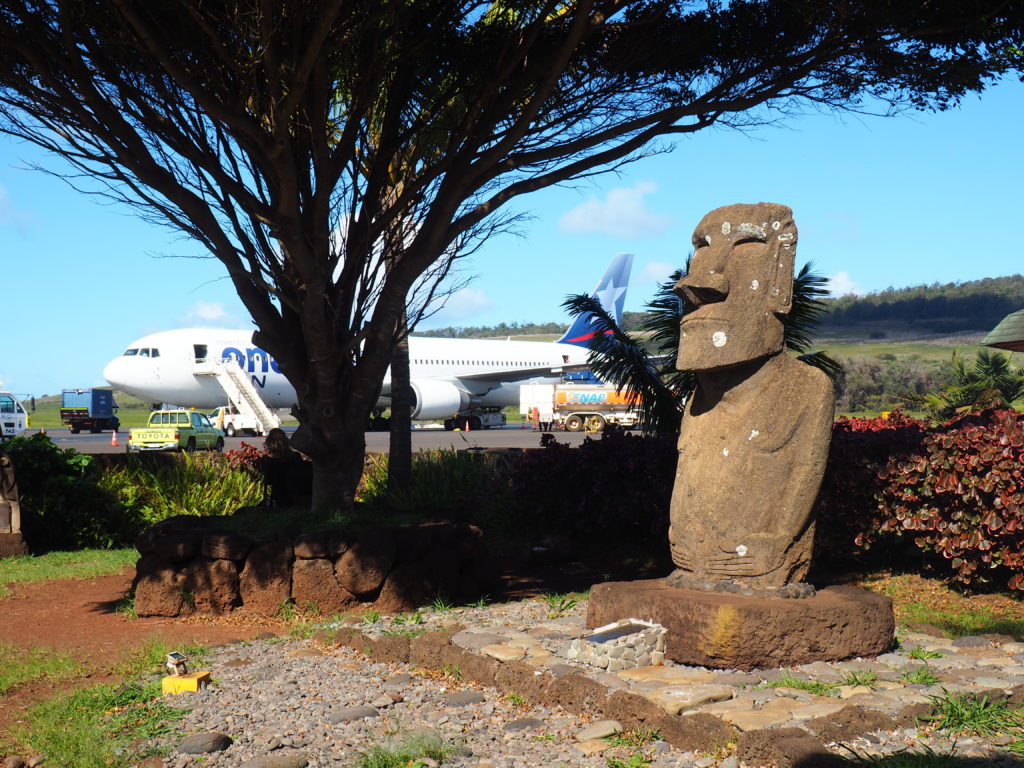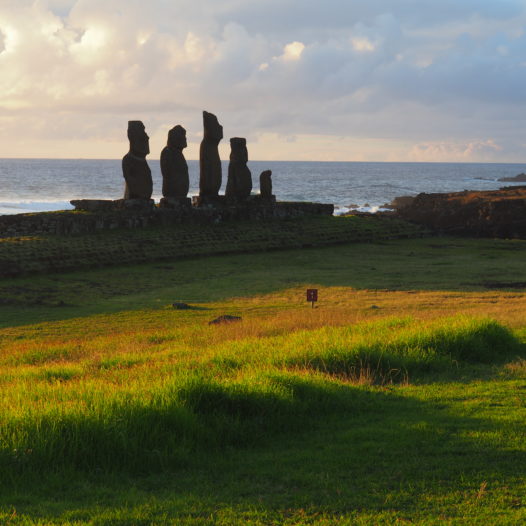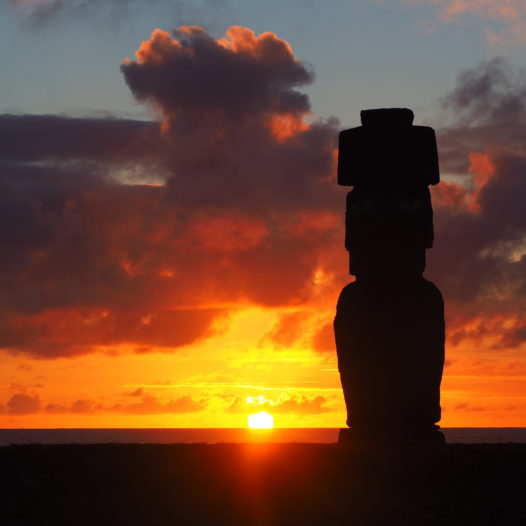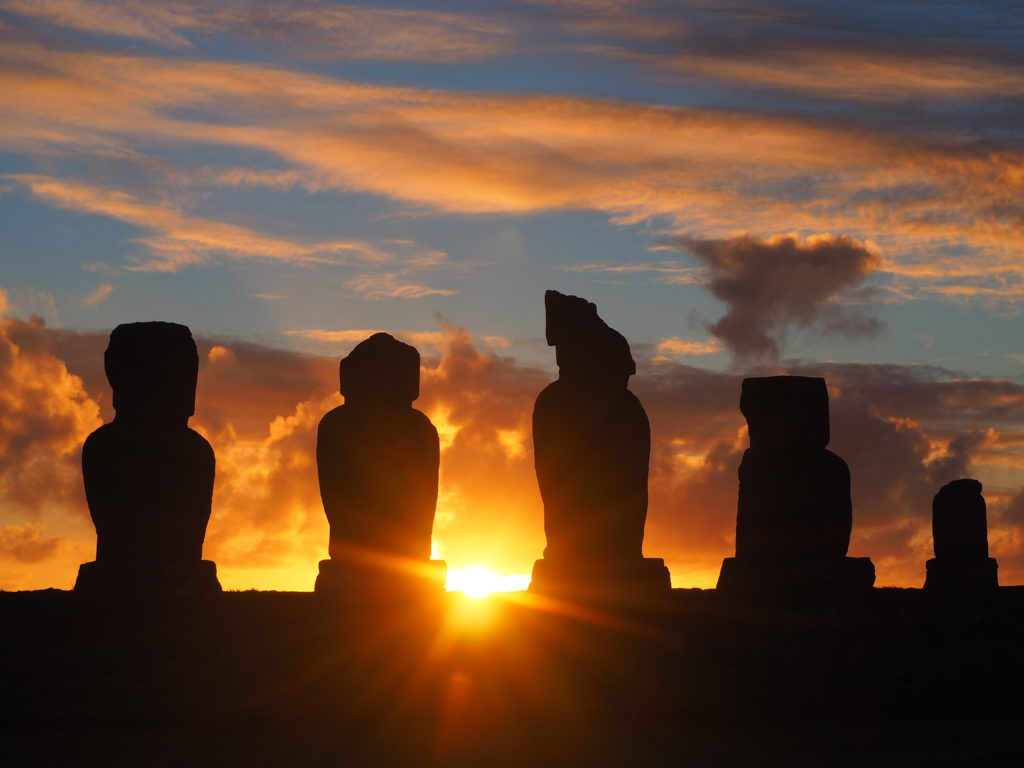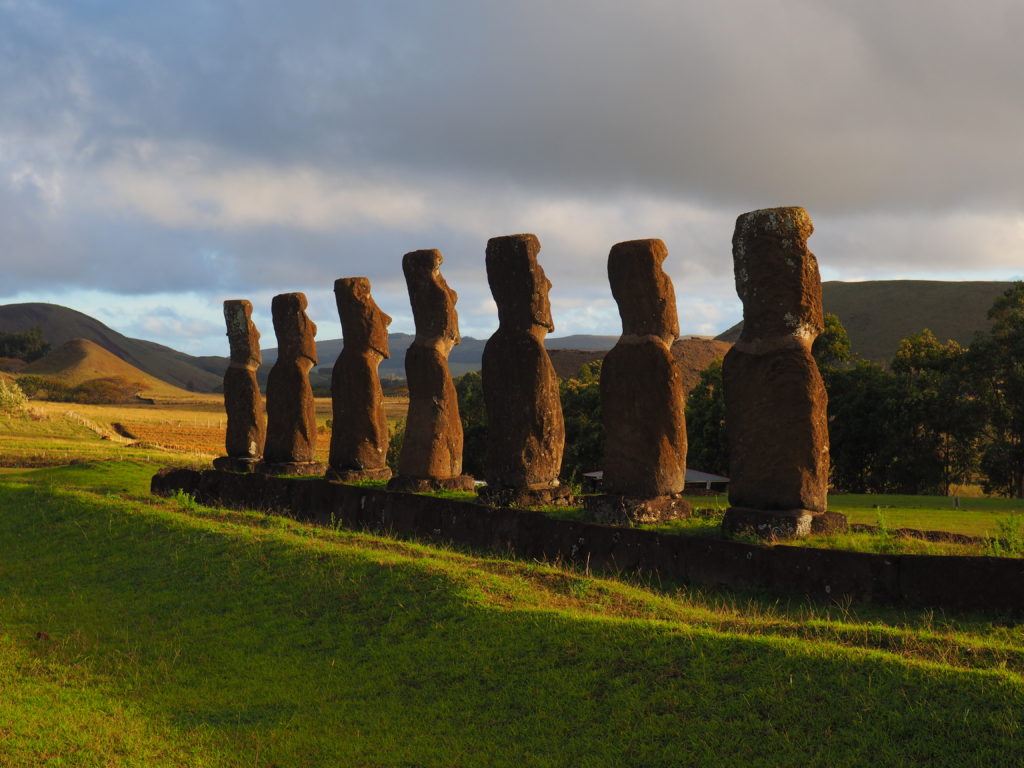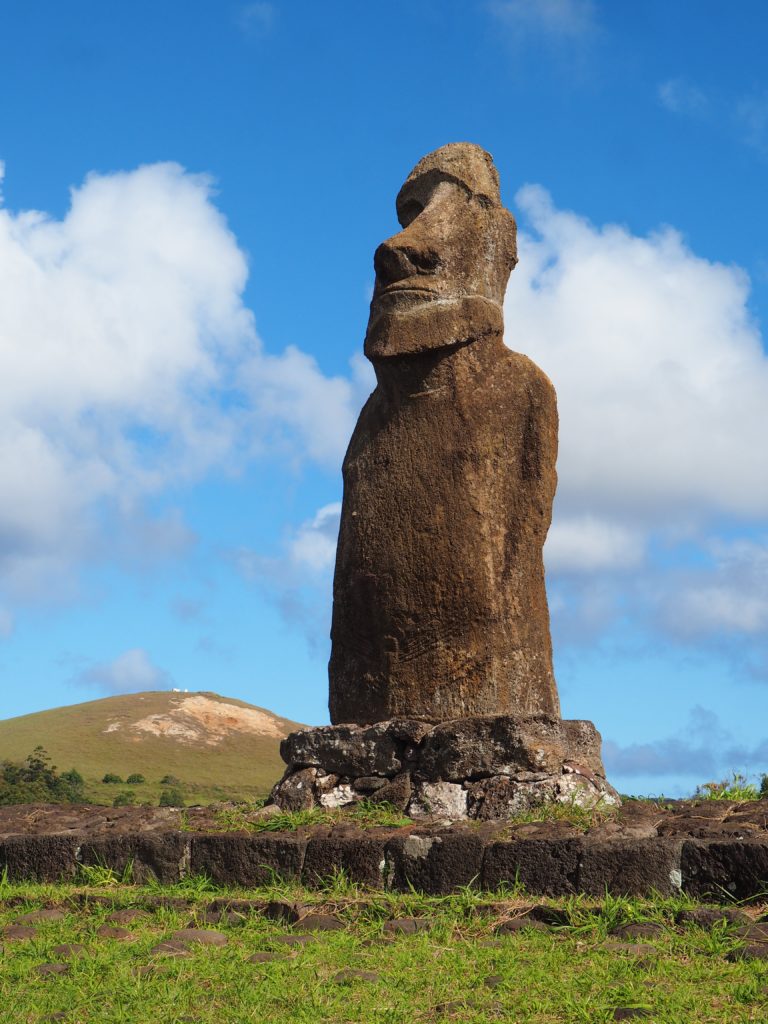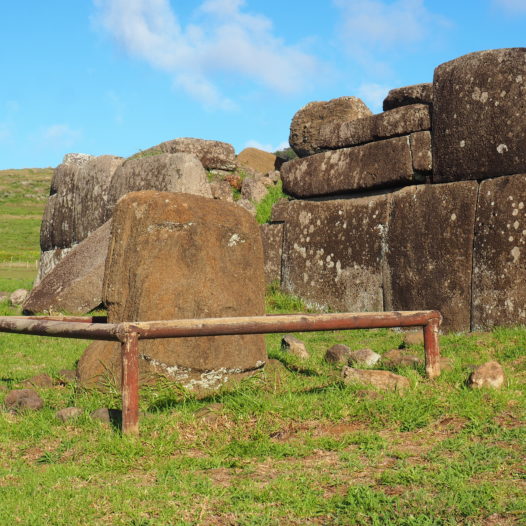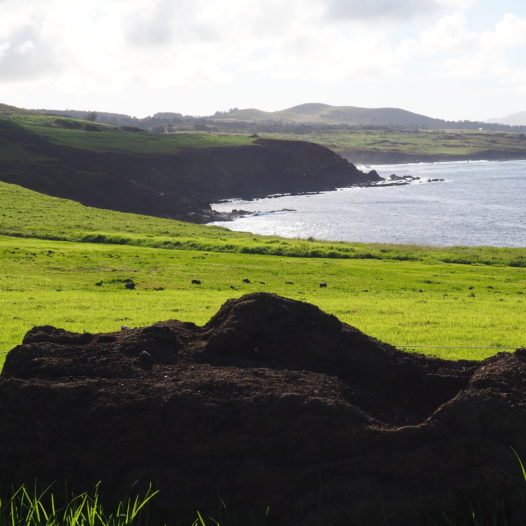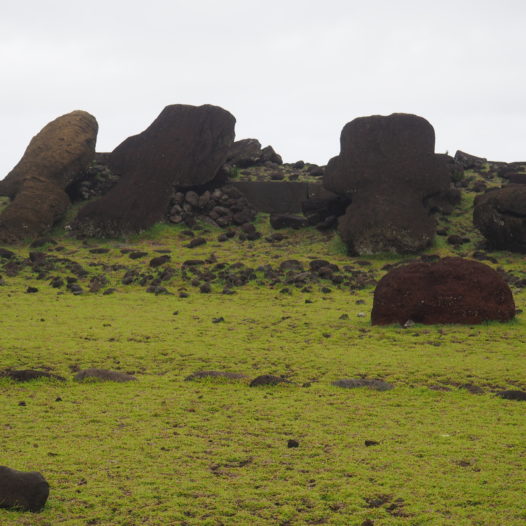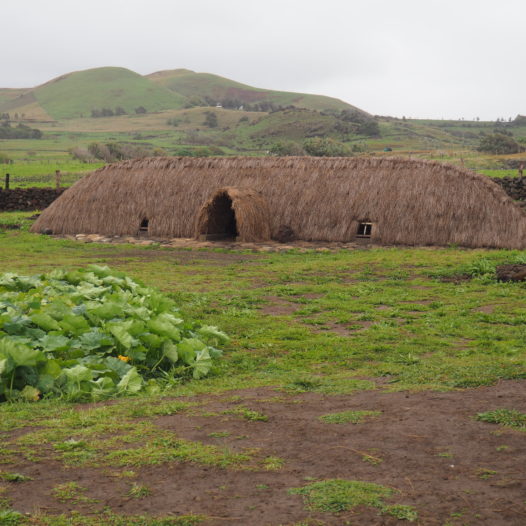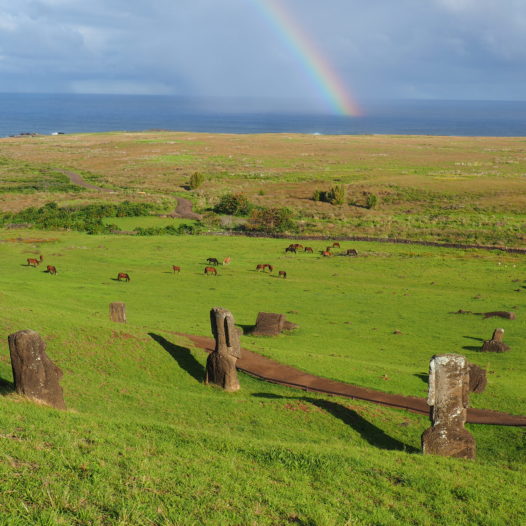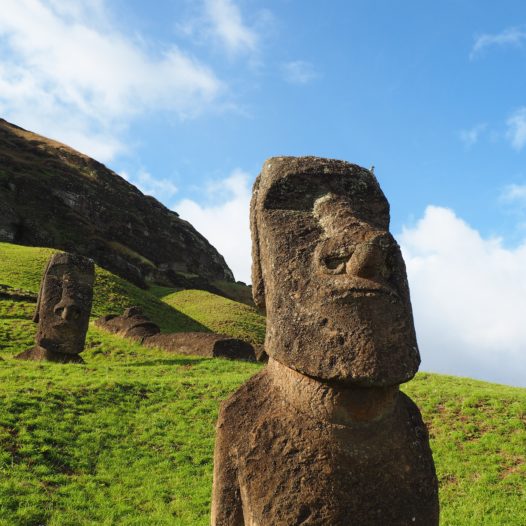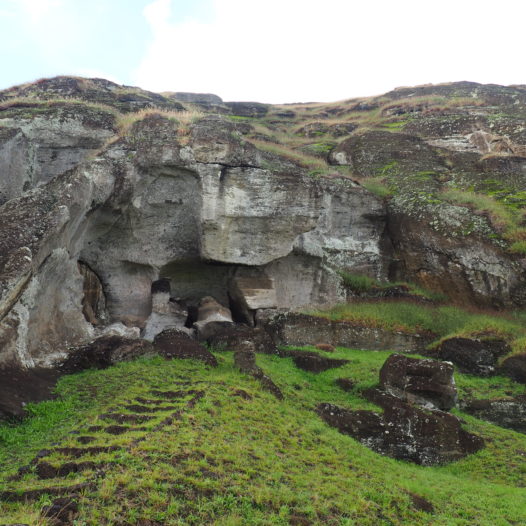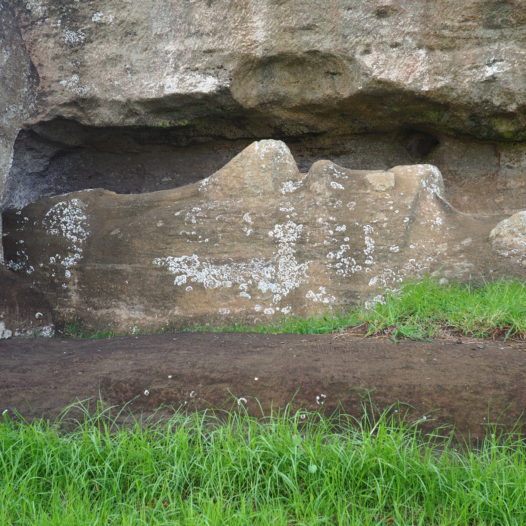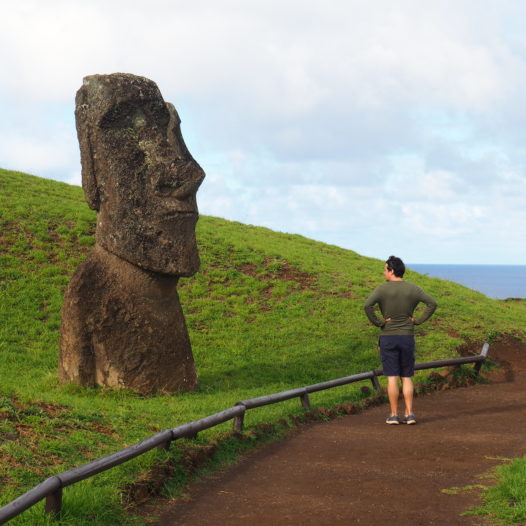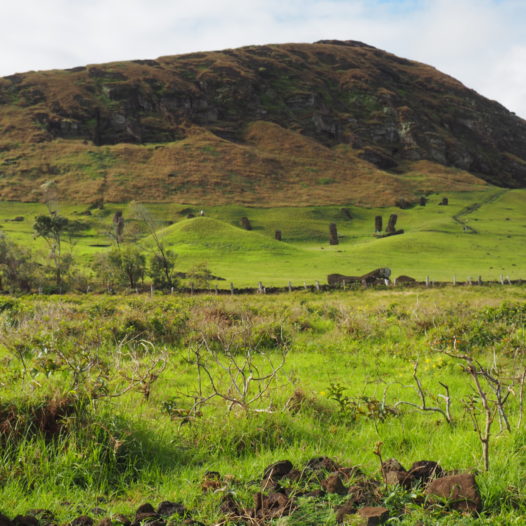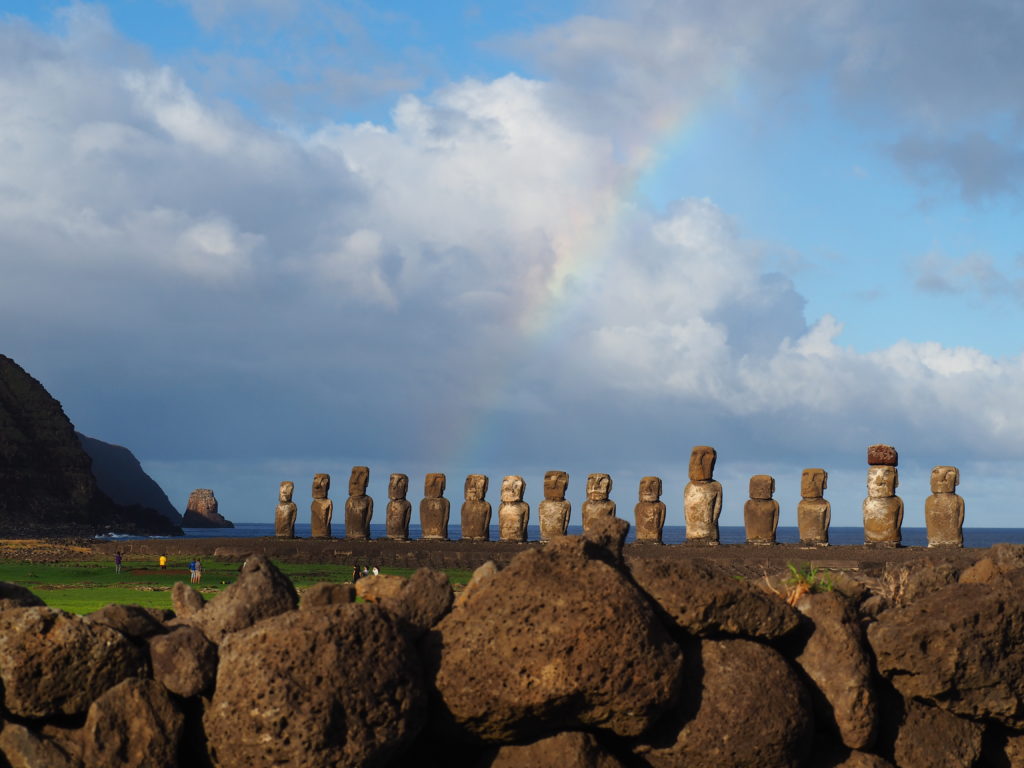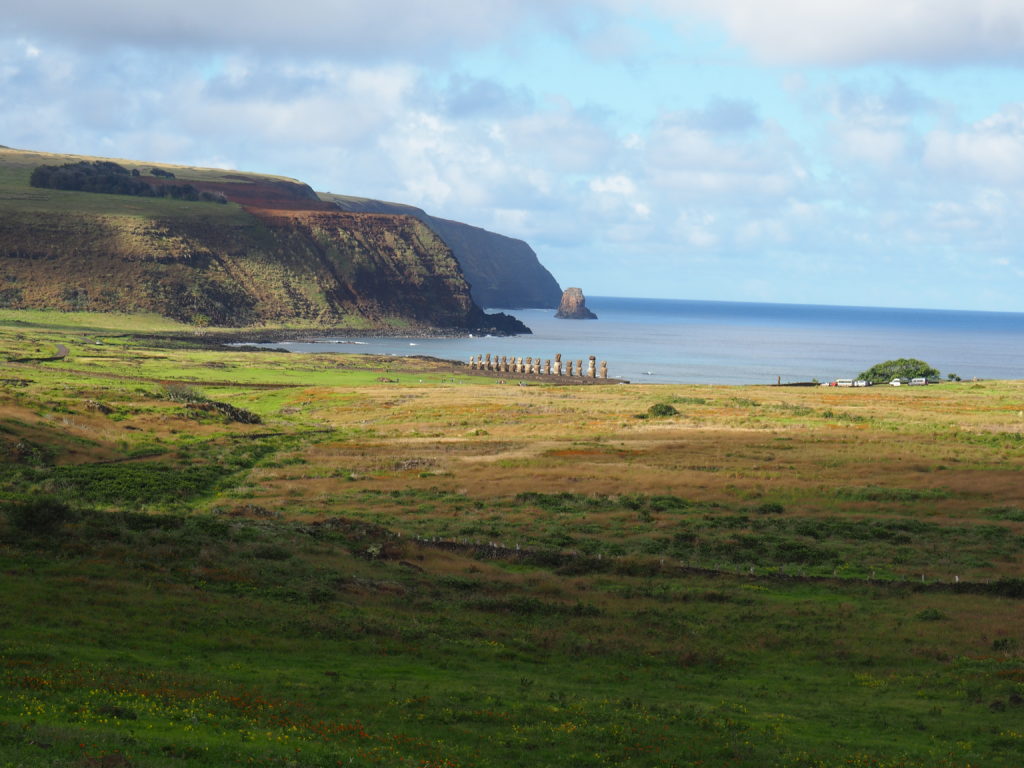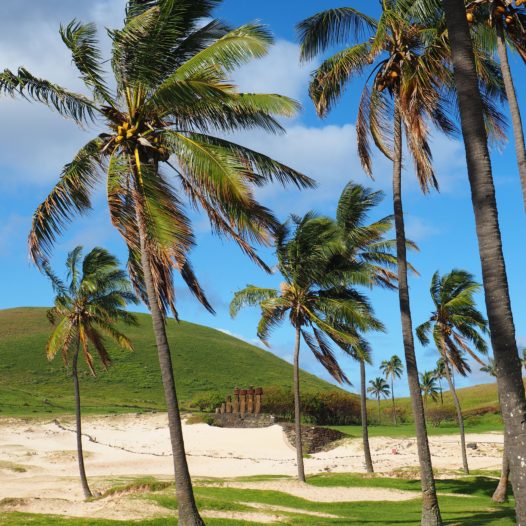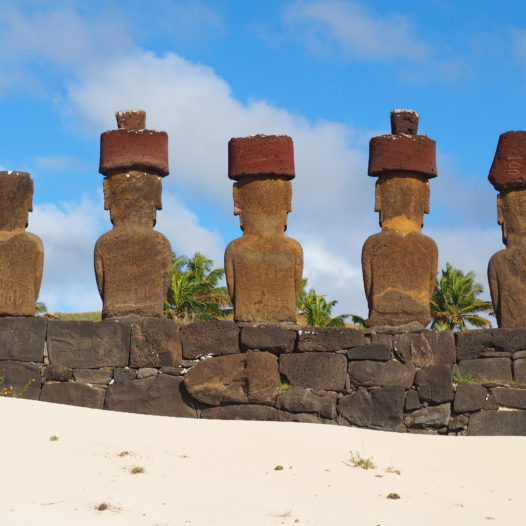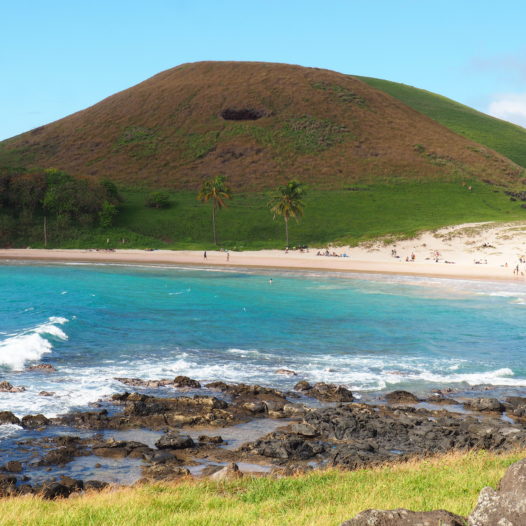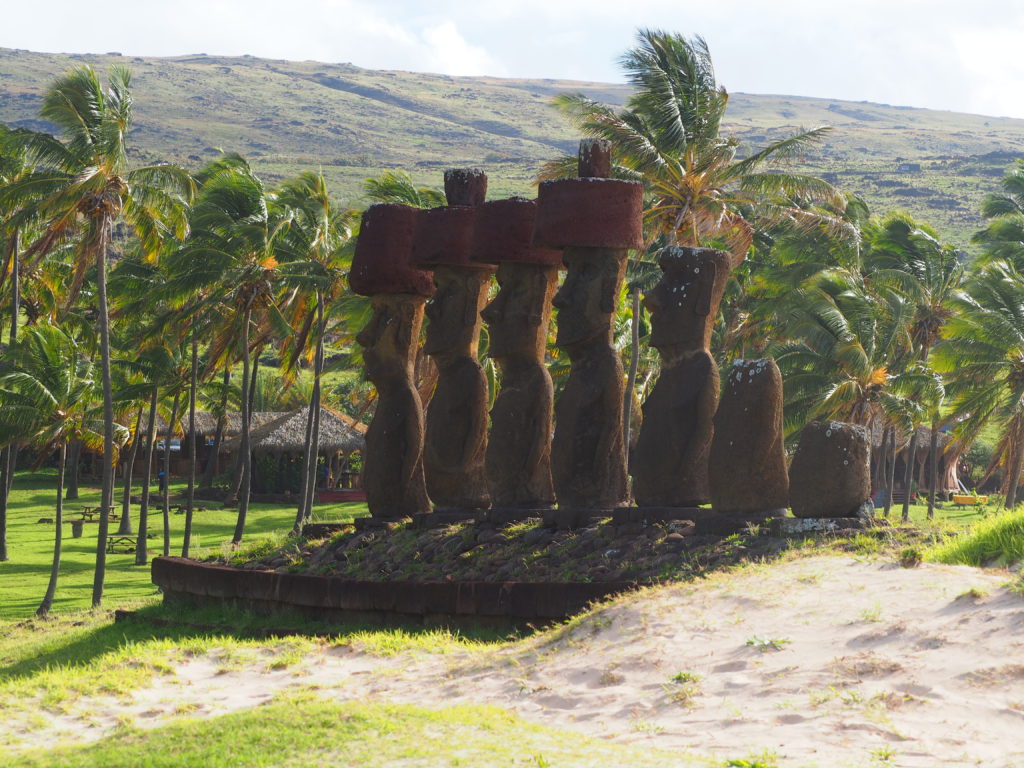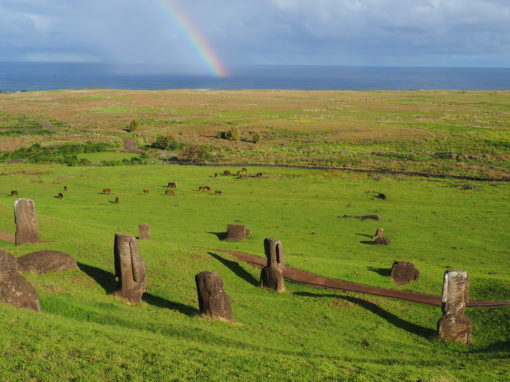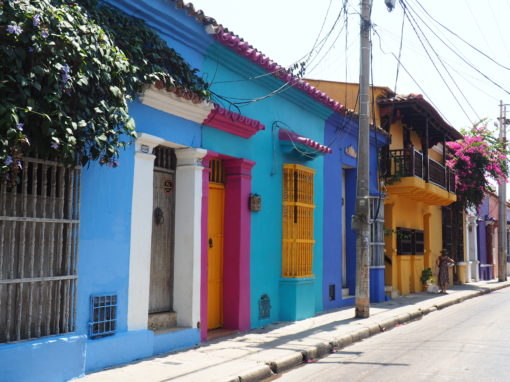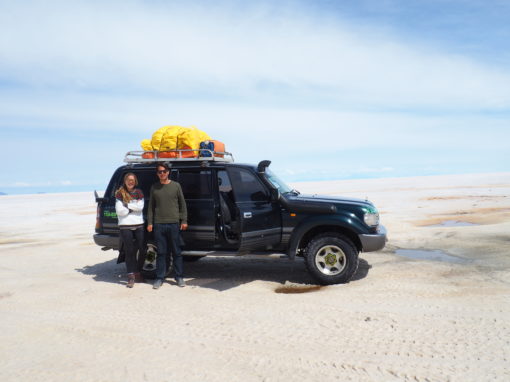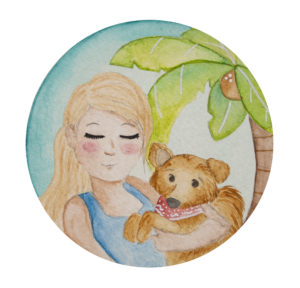All along the shores of Easter Island you can see groups of the famous moai standing fiercely and shining in the sun. Most of the time they’re facing the hills, showing their backs to the sea, as a way of protecting the island.
Almost all of the coastal line of Rapa Nui (which is the original name of Easter Island) is rocky and rough, with pieces of land that wouldn’t misfit the coast of Ireland. Therefore the moai often just disappear in the pitch black background. Thus don’t think it’s always easy to spot them. This is especially true because many moai have been toppled during the tribal wars.
The moai carried out a double function for the Polynesians. On the one hand their creation established the ancestry of the clans. On the other it showed the craftsmanship, power and organisational skills of those clans. So basically it was a “look at how ancient, crafty, powerful and organisational our group is” kind of showing off.
The increasing need to show all of these ‘virtues’ eventually even made the clans dispute basic resources like food and wood. After all, to move the moai, much wood was needed. The increasing scarcity eventually led to war among the clans and the toppled moai are a sad commemoration of those days.
Most of moai these days are just randomly lying around, waiting for someone to restore them.
If you want to see them all, you really have to stay focused while driving around. The app maps.me has marked them all for example, but even if you’re standing next to one you’re still not sure if you have crossed of a new statue from your list. “Would that be one?” you hear yourself wondering quite often.
Therefore a little bit of help in here, to easily find the most impressive or outstanding ones. Most of the restored ones are located within the boundaries of the national park, so keep in mind that you need to buy a ticket to visit those!
Airport of Hanga Roa
Upon arrival you can already see your first moai! How cool is that! Although it’s a fairly new one, I need to put in in this list anyway. Because as a local put it, if it’s made by the people of Rapa Nui, why wouldn’t it be a real moai?
Tahai
The moai of Tahai are located right on the coast, fairly close to town. The area contains three ceremonial platforms – Ko Te Riku, Tahai and Vai Ure, with a total of 7 moai. Moai Ko Te Riku is a little unique, as its eyes have been restored by an American archeologist.
It takes a 20 minute walk from the most northern end of main street to get there. The Ahu Tahai group is not part of the Rapa Nui National Park, so you can enter the area for free!
Friendly horses and dogs roam free around the statues. But it’s not just the scenic setting why you should visit this place. If you want to make it worthy then you MUST go to Tahai around sunset.
You won’t be the only one visiting the spot around this time. In fact, I guess visiting Tahai is basically the # 1 activity on this island around sunset. The pictures below will show you why!
The sunken Moai
Some 20 meters below the surface in front of the bay of Hanga Roa you’ll find another peculiar statue: at the bottom of the ocean! Although again this is not an authentic statue carved by the ancient Rapa Nui people, its location is so mysterious that it needs a mention in this list anyway.
The moai was made for the Chilean television show Iorana, in the ’90s. A diver later filled the statue with cement and sunk it to the bottom of the ocean. All diving centers can take you there if you’re up for an eerie underwater moment!
Akivi
The statues of Akivi are said to represent the seven Polynesian explorers who found the island. These are now mainly known as the moai that are facing the sea. Estimations are that they were created in the 15th century and put in that sea-facing postion in order to frighten any possible conquerors.
Also interesting to know might be that these moai were the first ones that were restored and re-erected on their spot in 1960, by the American archeologist William Mulloy.
The view on the ocean is wonderful. Not as perfect as the backdrop of other moai (Tongariki for example), but the setting still is very amazing, especially around sunset, when the moai face the last warming rays as you can see in the picture below.
The lonely moai
On the road of Pia Taro – a short cut to the main road from out of town – you can find this huge moai on a ahu. It feels like he’s kind of neglected, as you just kind of have to notice him by accident.
But he’s out there and the area is open to visitors, so don’t be shy and bring that fellow a visit!
Vinapu
The moai are again swept from their feet at this spot, but because of their backdrop, it’s still a fascinating place to visit. Not only are the views on the rugged coastline absolutely stunning, the moai are also situated near a very thick wall, probably their former ahu. The large stones fit perfectly into one another, which is really remarkable.
As I’d just been to Machu Picchu the walls reminded me very much of the inca buildings over there. I later on read that the Polynesians didn’t do stonework at all, except at Easter Island. This is one of the reasons that Thor Heyerdahl thought the first inhabitants of this island were from South America, rather than Polynesia.
Vinapu is an easy reach from Hanga Roa. If you don’t have a car it’s also easy to go there by bicycle.
Vaipu / Hanga Te’e
It’s kind of difficult to spot these moai on the eastern road, as they have fallen down flat on their noses. We knew they were supposed to be there somewhere, but it took us two visits before we finally were able to spot them. Like most of the moai on the island these moai were tumbled during the tribal wars on Rapa Nui.
It’s kind of a sad view though, to see them all laying down so helpless on the ground. Even the red hats / topknots (named ‘pukao’) are still around.
Close to the site there’s a (newly structured) house that shows its visitors how the people of Rapa Nui used to live. Fun to have a look at, while you’re there!
Rano Raraku
Rano Raraku is a remarkable place on Easter Island. I mean, the island itself already is extraordinary, but as you enter the quarry of where it all began – that is, where all of the moai carving on this island took place – it’s like you’ve entered another world.
Hundreds of moai didn’t make it that far from from their birthplace and are all just frozen in time, within and outside of this old volcano crater. While driving towards the area you can already see lot of heads sticking out of the ground on the slope of the hill. So bizar.
An exact 397 moai are to be found in here, scattered all over the place. That’s almost the half of the 884 (so far discovered) moai. Quite a lot!
Read more about Rano Raraku in here!
Tongariki
Look at that; the largest platform of moai on the island! And perhaps the most photographed one of them all too. The moai of Tongariki all were toppled during the civil war (started by the tribes due to a lack of resources). Its base (the ahu) was swept away after a tsunami on top of that.
But with a little help of a Japanese crane company they’re back on their feet nowadays.
Te Pito Kura
At this spot you can find the largest moai statue of the island! At least the largest one that had been freed from to the volcano quarry of Rano Rarako. And it was transported as well all the way to its ahu.Unfortunately it was pushed down some two centuries ago.
The sign near the statue say a widow ordered this moai to commemorate her late husband. Apart from this lovely story its dimensions are just spectacular: the ears alone measure 2 meters, its height reaches 10 meters and it is estimated that its weight must exceed 80 tons.
When we were at the site in June it was raining really, really hard. So I couldn’t make a proper picture unfortunately, next time better :)!
Anakena
All of the moai are special of course, but Ahu Nau Nau and Ahu Ature Huki in particular won the lottery. I mean, just look at the location of these moai.
In the north an inland bay just pops up out of the blue along with its golden sand, a gorgeous coconut grove, crystal clear water, calm waves and free ranging horses in the grassy hills. Such a welcoming place.
According to the stories this is the spot where the first king Hotu Matu’a disembarked around 700-1000 AD. So Anakena basically represents the start of the Rapa Nui culture. Knowing all of this while laying on Anakena beach with those impressive moai behind you – built as a tribute to the first arrival on the island – is quite an experience for sure.
Read more about Anakena beach in here!
